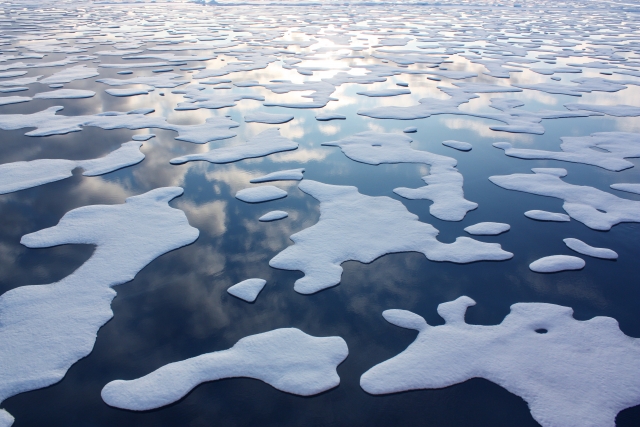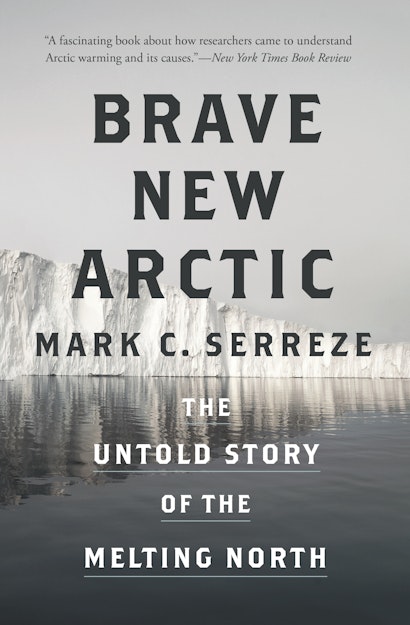The Arctic Ocean is an ocean of ice. Everything that lives on, in or around the Arctic Ocean, and that includes peoples of the north, has adapted to and lives in harmony with that ice. But the Arctic Ocean is losing its ice. As a climate scientist who first set foot in the north back in 1982, when the Arctic was still very much the Arctic of old, I’ve had a front row seat to watch it transform. My book, Brave New Arctic, tells the story of the changing north through the lens of science. It has been a few years since that book was published, and over that time, my eyes have opened to the wider to the realization that what is happening at the top of the world is more than just a story of the science of climate change. In losing its cold and ice, the Arctic is also losing its isolation, becoming a hotbed of shifting economics and geopolitics.
Nineteenth century European Arctic exploration of the Arctic, while partly driven by nationalism and the spirit of adventure, was also very much inspired by potential economic gain. A major goal was to find a shortcut for trade with Asia, via the Northwest Passage through the channels of the Canadian Arctic Archipelago, or via the Northern Sea Route, along the Russian coast. However, in the search for these shortcuts, the twin barriers of ice and Arctic cold took their toll. In 1845, for example, the John Franklin expedition left England to conquer the Northwest Passage in two sailing vessels, the Erebus and Terror. All died in the attempt; some of the men resorting to cannibalism in the end. The Northern Sea Route was first traversed by Adolf Erik Nordenskiol in 1878 to 1879, but it was not until Roald Amundsen’s voyage on the Goja, which started in 1903, that that the Northwest Passage was traversed. While ultimately victorious, it took Amundsen and his hardy crew more than two years to complete their voyage. The delusion of an economically viable shortcut nevertheless persisted. In 1969, following the discovery of oil on the North Slope of Alaska, the 1000-foot long Manhattan, an ice-strengthened oil tanker, attempted to traverse the Northwest Passage to demonstrate that oil could be transported from Prudhoe Bay to port facilities where it could be distributed. While the tanker competed the voyage, the experiment only emphasized what the early explorers had shown—the Arctic’s ice was a stout barrier to marine use. The solution to transporting Prudhoe Bay oil was the Alaska pipeline, completed in 1977.
The first evidence from satellite data that sea ice extent was in decline emerged in the early 1990s. Later that decade, analysis of sonar data collected by submarines revealed that the ice was also getting thinner. In some respects, these initial changes were consistent with the expected response of the Arctic to the rising concentration of carbon dioxide in the atmosphere. But as I saw it, the decline also had the hallmarks of plain old natural climate variability, related to shifts in wind patterns. The question was not whether the effects of greenhouse warming would eventually take hold in the Arctic, it was a question of whether the effects were already in place, and I wasn’t convinced. That skepticism did not last, however, for by the early 2000s, it was clear that the Arctic was transforming in rather radical ways.
A Brave New Arctic is now fully upon us. Most of the Arctic Ocean’s old, thick sea ice is gone. Plenty of ice still grows in the winter, but that ice most melts way in summer. Back in the early 1980s, at the end of the Arctic melt season in September, sea ice used to cover an area approximately the size of the contiguous United States. What is left now in September is equivalent to throwing out all of the States east of the Mississippi, along with the Dakotas, Iowa, and in some years, even more states.
With less and thinner ice, the Arctic Ocean, once so isolated, is now accessible. Huge cruise ships sail through the Northwest Passage carrying their moneyed tourists. Will the Northern Sea Route along the Russian coast become a viable shortcut for shipping between the Atlantic and Pacific Oceans? While opinions vary, shipping through the Northern Sea Route, supported by Russia’s immense fleet of icebreakers, is on the rise. Large deposits of oil and natural gas lie under the Arctic Ocean seafloor, primarily along the shallow, continental shelf seas within the Exclusive Economic Zone (EEZ) of Russia and well as Beaufort and Chukchi Seas within the EEZ of the United States. Norway is looking for more oil on the Barents Seas. With less ice, these deposits are more accessible, and Russia, in particular, is taking advantage. Fish species rare or not formerly seen in Arctic waters are moving north. Russia is opening a new commercial fishery within their EEZ in the Chukchi Sea for Alaska Pollock. As indigenous peoples of the Arctic try and adapt, international tensions rise. The United States Air Force, Navy and Army all recognize the growing strategic importance of the region; militarization of the Arctic is on the rise.
There are eight Arctic nations that have land north of the Arctic circle—Russia, Norway, Finland, Sweden, Iceland, Canada, the United States, and through virtue of Greenland, Denmark. The Arctic nations, along with Indigenous groups, form the Arctic Council. There are also observer nations, such as China and South Korea, that have interests in the Arctic. Coordination between members of the Arctic Council and observer nations, together with acceptance of marine limits established through the United Nations Convention Law of the Sea (UNCLOS) that define internal waters, EEZs and Right of Innocent Passage through the narrow Bering Strait, offers optimism that as the Arctic gets busier, it will do so peacefully.
The Arctic of old that I remember when first set foot in the region is becoming a distant memory. Change is inevitable—Earth’s climate has changed many times in the past and for many different reasons, but climate change doesn’t just happen by itself; it always has a cause. This time the cause is us, and the Arctic is teaching us that the impacts of climate change go far beyond the iconic image of a polar bear sitting of a melting ice floe. Indeed, it is a Brave New Arctic.
Mark C. Serreze is Director of the National Snow and Ice Data Center, Distinguished Professor of Geography, and Fellow of the Cooperative Institute for Research in Environmental Sciences at the University of Colorado at Boulder. He is the coauthor of The Arctic Climate System.

